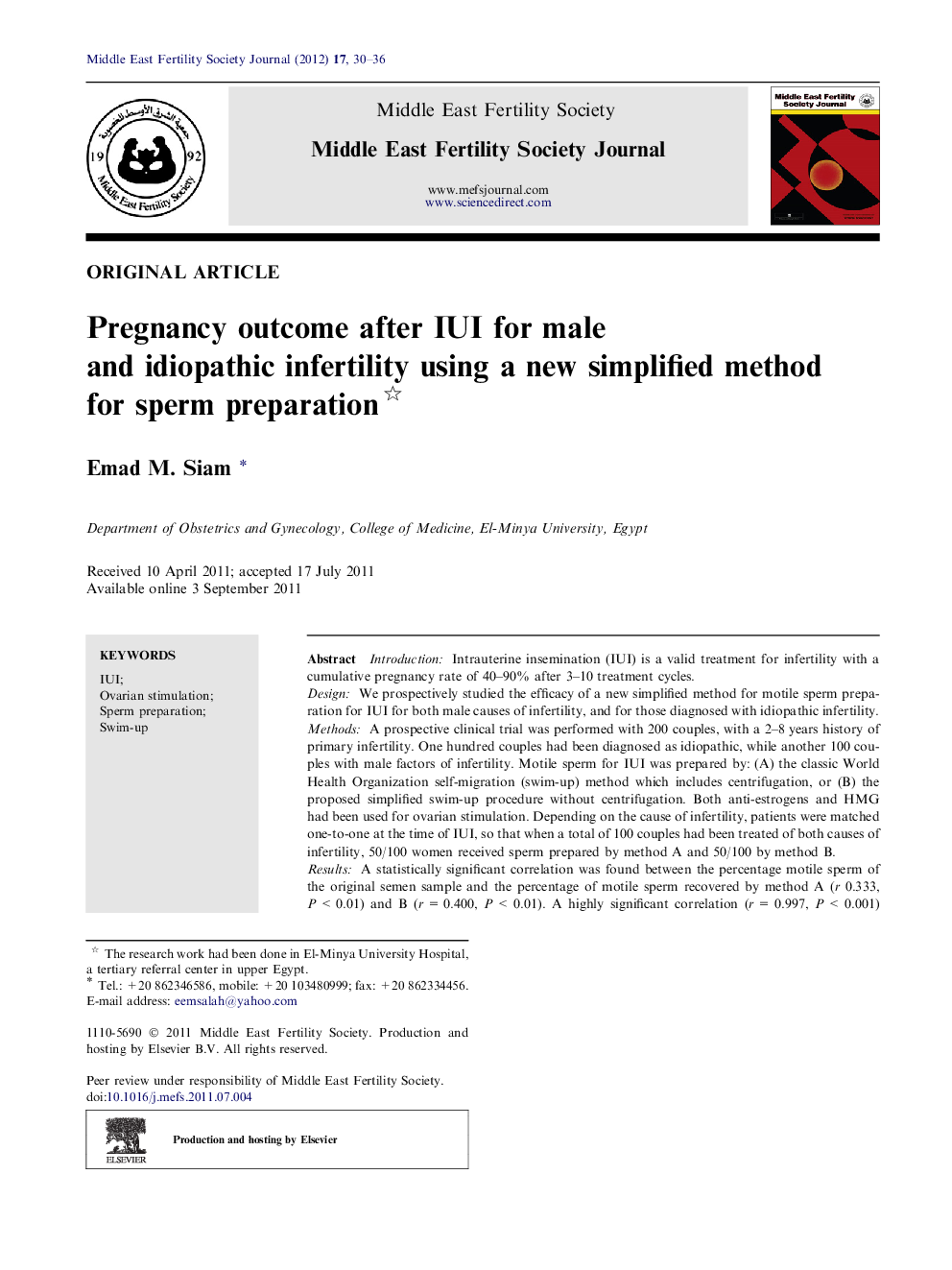| Article ID | Journal | Published Year | Pages | File Type |
|---|---|---|---|---|
| 3966307 | Middle East Fertility Society Journal | 2012 | 7 Pages |
IntroductionIntrauterine insemination (IUI) is a valid treatment for infertility with a cumulative pregnancy rate of 40–90% after 3–10 treatment cycles.DesignWe prospectively studied the efficacy of a new simplified method for motile sperm preparation for IUI for both male causes of infertility, and for those diagnosed with idiopathic infertility.MethodsA prospective clinical trial was performed with 200 couples, with a 2–8 years history of primary infertility. One hundred couples had been diagnosed as idiopathic, while another 100 couples with male factors of infertility. Motile sperm for IUI was prepared by: (A) the classic World Health Organization self-migration (swim-up) method which includes centrifugation, or (B) the proposed simplified swim-up procedure without centrifugation. Both anti-estrogens and HMG had been used for ovarian stimulation. Depending on the cause of infertility, patients were matched one-to-one at the time of IUI, so that when a total of 100 couples had been treated of both causes of infertility, 50/100 women received sperm prepared by method A and 50/100 by method B.ResultsA statistically significant correlation was found between the percentage motile sperm of the original semen sample and the percentage of motile sperm recovered by method A (r = 0.333, P < 0.01) and B (r = 0.400, P < 0.01). A highly significant correlation (r = 0.997, P < 0.001) was found between the two methods. The pregnancy outcome after the proposed IUI procedure was not significantly different after the traditional swim-up sperm preparation.ConclusionsThe simple proposed swim-up method was as effective as the classic swim-up method, regarding the sperm recovery and pregnancy outcome, but in an easier, and faster way.
